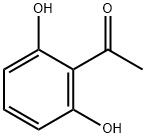
Malabaricone C
- Product NameMalabaricone C
- CAS63335-25-1
- CBNumberCB21120408
- MFC21H26O5
- MW358.43
- MDL NumberMFCD31557586
- MOL File63335-25-1.mol
- MSDS FileSDS
Chemical Properties
| storage temp. | Store at -20°C |
| solubility | DMF: 25 mg/ml; DMSO: 20 mg/ml; Ethanol: 10 mg/ml |
| form | A crystalline solid |
| color | White to off-white |
| FDA UNII | C9K53R3PRN |
Malabaricone C Price
| Product number | Packaging | Price | Product description | Buy |
|---|---|---|---|---|
| Cayman Chemical 29741 | 1mg | $37 | Malabaricone C |
Buy |
| Cayman Chemical 29741 | 25mg | $748 | Malabaricone C |
Buy |
| Cayman Chemical 29741 | 5mg | $169 | Malabaricone C |
Buy |
| Cayman Chemical 29741 | 10mg | $319 | Malabaricone C |
Buy |
| AK Scientific 7286CA | 1mg | $139 | MalabariconeC |
Buy |
Malabaricone C Chemical Properties,Usage,Production
Description
Malabaricone C is a diarylnonanoid that has been found in Myristica and has diverse biological activities. It scavenges 59.9% of 2,2-diphenyl-1-picrylhydrazyl (DPPH; ) radicals when used at a concentration of 7 μg/ml. Malabaricone C is active against S. aureus, B. subtilis, and C. albicans in vitro (MICs = 2-32 μg/ml). It is cytotoxic to A549, HL-60, and MCF-7 cells (IC50s = 12.3, 46.1, and 10.8 μM, respectively). Malabaricone C inhibits sphingomyelin synthase 1 (SMS1) and SMS2 activity in cell lysates (IC50s = 3 and 1.5 μM, respectively). It decreases body weight gain, hepatic steatosis, and hepatic and plasma triglyceride levels in a mouse model of high-fat diet-induced obesity when administered at a dose of 0.1% in the diet.Uses
Malabaricone C is a useful research chemical compound from Myristica malabarica which exhibits antioxidant activity.Definition
ChEBI: A natural product found in Myristica cinnamomea.in vivo
Malabaricone C (High-fat diet supplemented with 0.1%, p.o., daily for 8 weeks) reduces body weight gain, improves glucose tolerance, and decreases lipid accumulation in the liver in high fat diet-induced obesity mice models[1].
Malabaricone C (10 mg/kg, i.p., a single dose for 24 h) inhibits T-cell activation and cytokine secretion in mice[2].
| Animal Model: | High fat diet-induced obesity mice models[1] |
| Dosage: | High-fat diet supplemented with 0.1% |
| Administration: | p.o., daily for 8 weeks |
| Result: | Reduced weight gain, improved glucose tolerance, and reduced hepatic steatosis in high fat diet-induced obesity mice models. |
| Animal Model: | Swiss, BALB/c, and C57BL/6 male mice[2] |
| Dosage: | 10 mg/kg |
| Administration: | i.p., a single dose for 24 h |
| Result: | Significantly decreased the percentage of proliferating cells as compared with vehicle control and resulted in significant decrease in mitogen-induced cytokine (IL-2, IFN-γ, and IL-6) secretion by T-cells. |
Preparation Products And Raw materials
Malabaricone C Suppliers
Global(41)Suppliers
| Supplier | Tel | Country | ProdList | Advantage | ||
|---|---|---|---|---|---|---|
| +86-0523-80183620 +86-17701422015 |
982552664@qq.com | China | 258 | 58 | ||
| +86-28-82633860; +8618080483897 |
sales@biopurify.com | China | 3772 | 58 | ||
| +1-781-999-5354 +1-00000000000 |
marketing@targetmol.com | United States | 32159 | 58 | ||
| +86-0571-87635730 +8615858229168 |
chem1022@hengdian-group.com | China | 1478 | 58 | ||
| support@targetmol.com | United States | 38630 | 58 | |||
| +86-0533-2185556 +8615965530500 |
nickzhang@hangyubiotech.com | China | 10983 | 58 | ||
| +86-18917019315 +86-13173601896 |
3582572959@qq.com | China | 496 | 58 | ||
| 400-186-5138 13341702378 |
winherb@126.com | China | 1010 | 58 | ||
| 18607101326 15172504745 |
aileen@chemfaces.com | China | 6905 | 55 | ||
| 021-65675885 18964387627 |
info@efebio.com | China | 9803 | 58 |
Malabaricone C Spectrum
PROMPT×
PROMPT
The What'sApp is temporarily not supported in mainland China
The What'sApp is temporarily not supported in mainland China
Cancel
Determine

